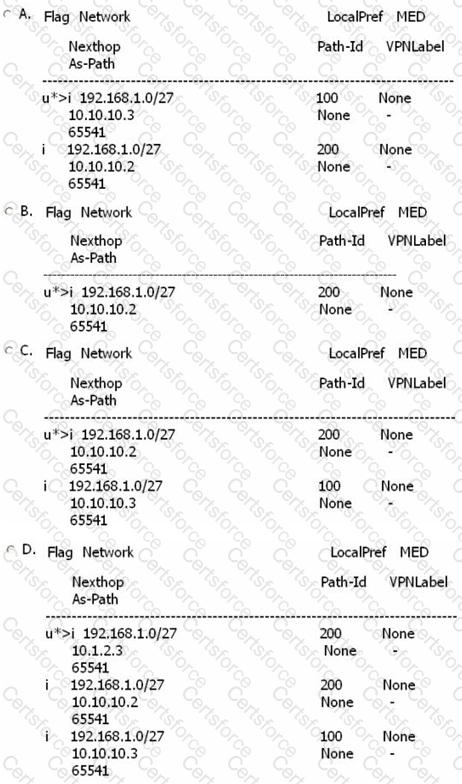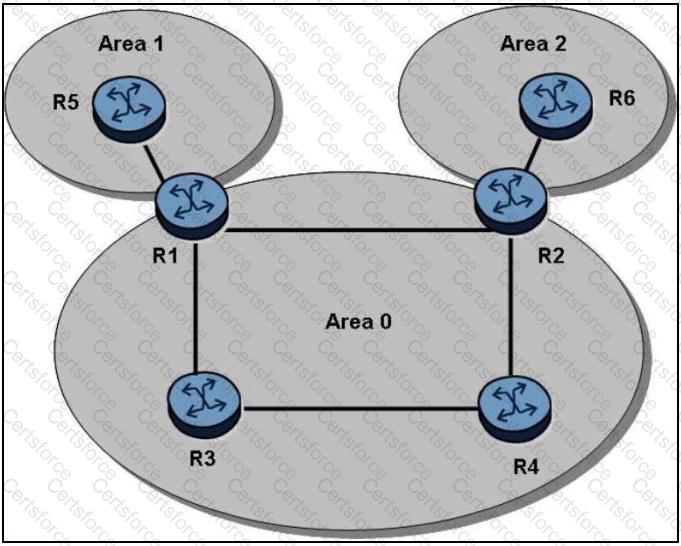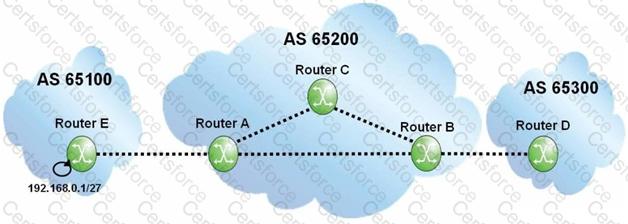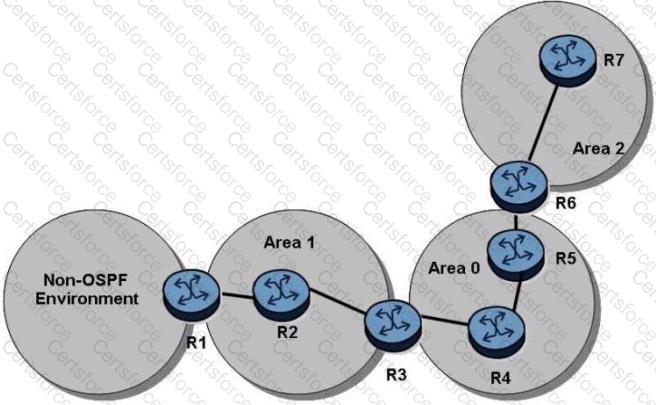Click the exhibit.
AS 65540 routers are iBGP fully-meshed. Prefixes advertised by router R2 have a local preference of 200. Router R1 advertises the prefix 192.168.1.0/27 to routers R2 and R3. Assuming that router R3 is configured with "advertise-external", what is the expected output of "show router bgp routes" when executed on router R4?

Refer to the exhibit.

Assume that OSPFv3 is properly configured on all routers and that R4 advertises its system prefix into Area 0. Which of the following statements best describes how R5 learns R4's IPv6 system prefix?
On an Nokia 7750 SR, which vc-type will strip service delimiting tags at the ingress PE?
Click the exhibit.

Assuming that none of the routers within AS 65200 is configured with next-hop-self", what will the BGP update for the 192.168.0.1/27 prefix contain when it arrives at router B?
Which of the following about Type 10 opaque LSAs is TRUE?
Which of the following statements about SAPs that are part of a VPVVS is FALSE?
Click on the exhibit.

In the topology shown, router R1 is an ASBR configured to export external routes to OSPF. There are no stub or NSSA areas. Which of the following regarding LSAs is TRUE?
Which of the following statements concerning OSPFv3 is false?
Initially, all ports on an Nokia 7750 SR have 10Gbps bandwidth. RSVP configuration limits reservable bandwidth to 30 percent on all interfaces. An LSP is signaled reserving 1 Gbps bandwidth. How much unreserved bandwidth is left on the interface?
Click the exhibit.

Given the following configuration for router R1, what is the expected Next Hop for prefix 192.168.1.0/27 as seen on router R2?
